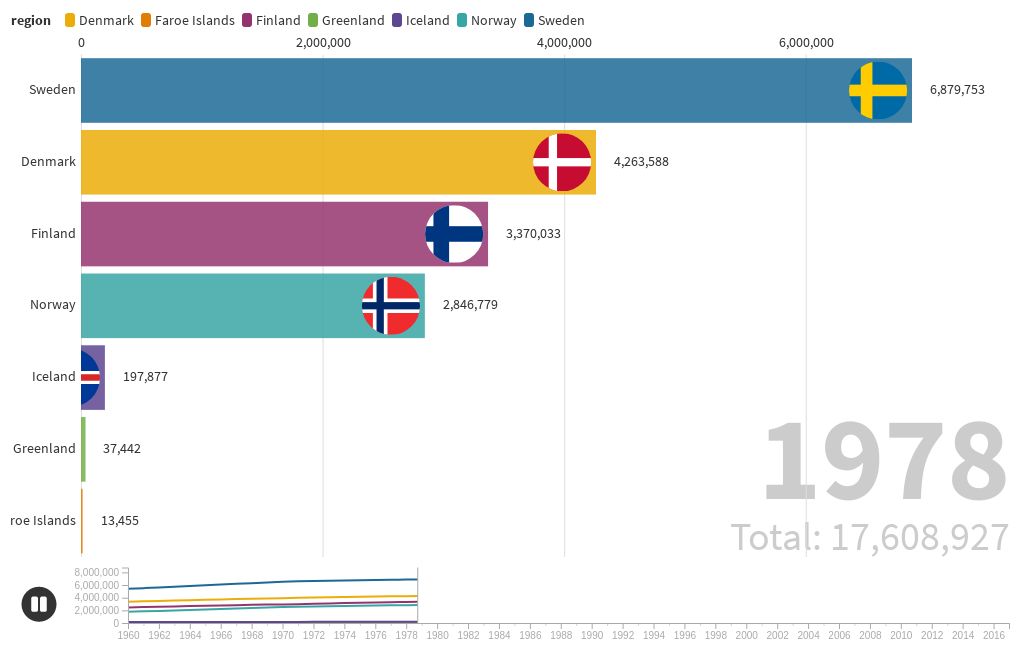
nordic countries population 19602017 every year Flourish
The Nordic fertility rates have steady declined for decades, as has the worlds. During the pandemic, from 2020 to 2021, the number of births increased in all Nordic countries except for Greenland, but the whole region reported sharp declines in fertility rates in 2022. Finland had the lowest fertility rate of all Nordic countries, 1.32 children.
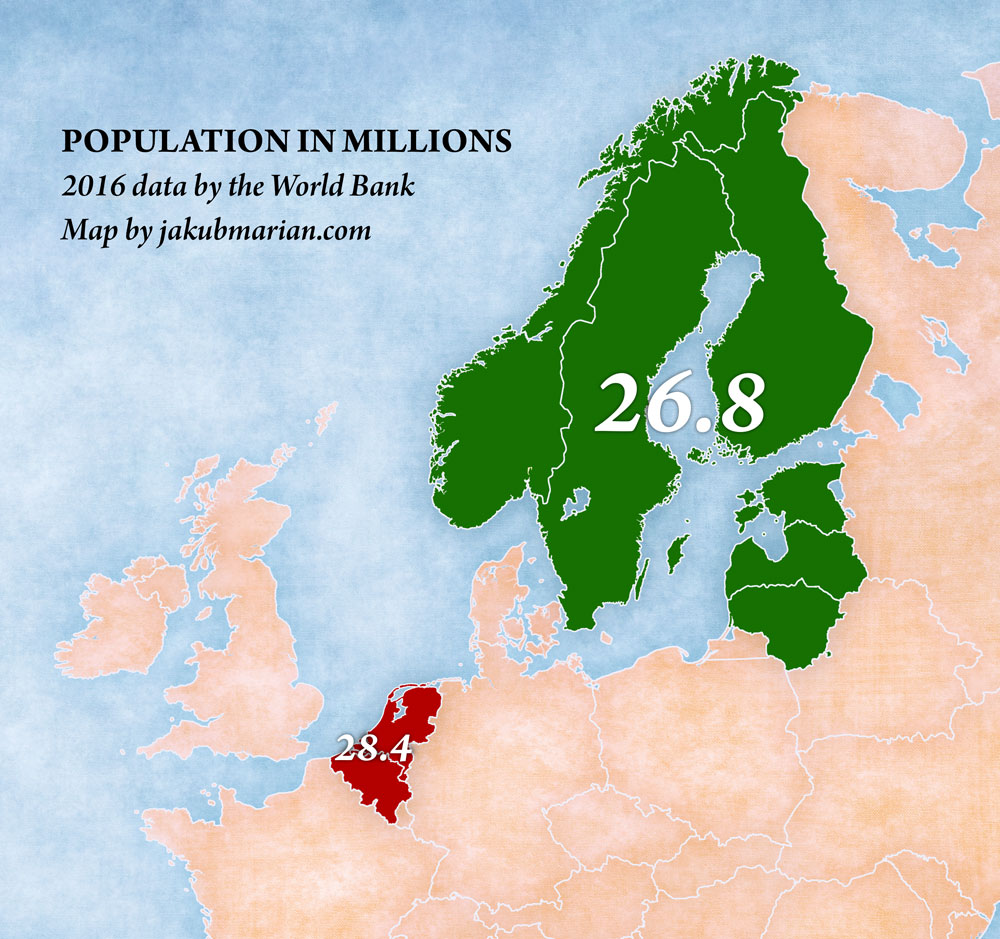
Population by country in Europe Map
The group aged 65 years and older is expected to increase in all the Nordic countries and self-governing regions. The increase is forecasted to almost 30 percent on a Nordic level varying between 17 percent in Finland to 52 percent on Iceland. Source: Nordic Statistics Database, POPU06 Population projections by reporting country, age, sex and time.
/row-of-scandinavian-national-flags-in-front-of-blue-sky-604375341-5b7619b44cedfd00259c3a5c.jpg)
The Population of Nordic Countries
The Nordic Region consists of Denmark, Norway, Sweden, Finland, and Iceland, as well as the Faroe Islands, Greenland, and Åland. You can find useful information about the Nordic Region and each of its countries here. Facts about Denmark

PPT The Nordic Countries PowerPoint Presentation, free download ID4868198
Population in the Nordic countries 2022, by gender 76,278 Detailed statistics Immigration in the Nordic countries 2001-2021 Get more insights Table of contents Editor's Picks Overview.
:max_bytes(150000):strip_icc()/difference-between-scandinavian-and-nordic-1626695-FINAL1-5c0009d546e0fb002608945f.png)
Nordic Countries List Capital Flags Population Area Country FAQ
Nordic countries, group of countries in northern Europe consisting of Denmark, Finland, Iceland, Norway, and Sweden. The designation includes the Faroe Islands and Greenland, which are autonomous island regions of Denmark, and the Åland Islands, an autonomous island region of Finland.
Population Density in the Baltic Sea Region (Nordregio, downloaded... Download Scientific Diagram
Population Sweden is also the Nordic country with the largest population. 10.45 million people live in the country. Denmark, Finland, and Norway all have between five and six million.

Population change in the Nordics Map, Norden, Nordic
The Nordic Countries are a group of countries in northern Europe. There are 5 Nordic countries, Denmark, Sweden, Norway, Finland, and Iceland. Denmark, Sweden, and Norway are constitutional monarchies and parliamentary democracies. Finland and Iceland are democratic republics.

Nordic Countries WorldAtlas
In the Nordic countries, Sweden has the largest population with over ten million inhabitants in 2022. Denmark, Finland, and Norway all have between five and six million inhabitants, whereas.

Population density of the Nordic countries, Greenland and Faroes included [xpost from r
There are 6 Nordic countries, and they make up an area of Northern Europe and the North Atlantic. What are the Nordic countries? The six Nordic countries are Denmark, Finland, Greenland, Iceland, Norway, and Sweden. Frequently Asked Questions Facts about the Nordic countries Sources
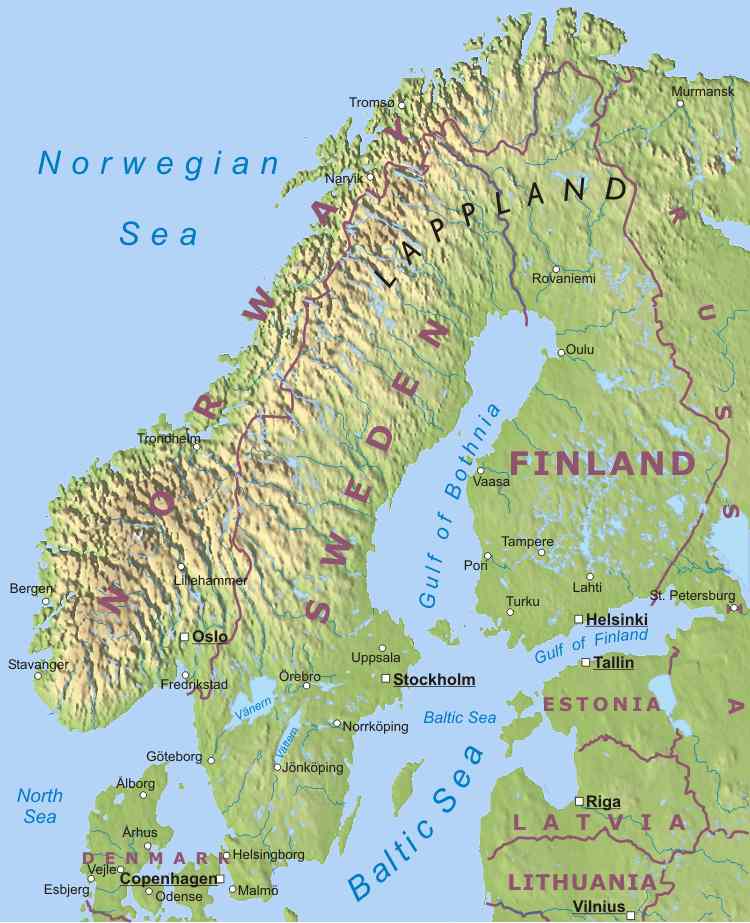
Population Density in the Nordic Countries (700x1012) MapPorn
Apr 11, 2023. Denmark has, by far, the highest population density of the Nordic countries. This is related to the fact that it is the smallest Nordic country in terms of land area. Meanwhile.

Scandinavian Countries WorldAtlas
Population in the capital areas in Nordic countries 2013-2023 Degree of urbanization in Nordic countries 2012-2022 Average age of the population in Denmark 2005-2023
Population Density in the Nordic Countries (700x1012) r/MapPorn
This is a list of the most populous municipalities in the Nordic countries, with only municipalities of at least 100,000 inhabitants. Of the five Nordic countries ( Denmark , Finland , Iceland , Norway , and Sweden ), every country has at least one city above 100,000 inhabitants.
Population Density map of the nordic countries r/europe
Population projections Population projections include statistics on expected population growth and decline, by age and gender of the inhabitants. The latest population forecasts suggest that the Nordic region will continue to grow over the next 20 years, but at a slower rate than in the last decade.
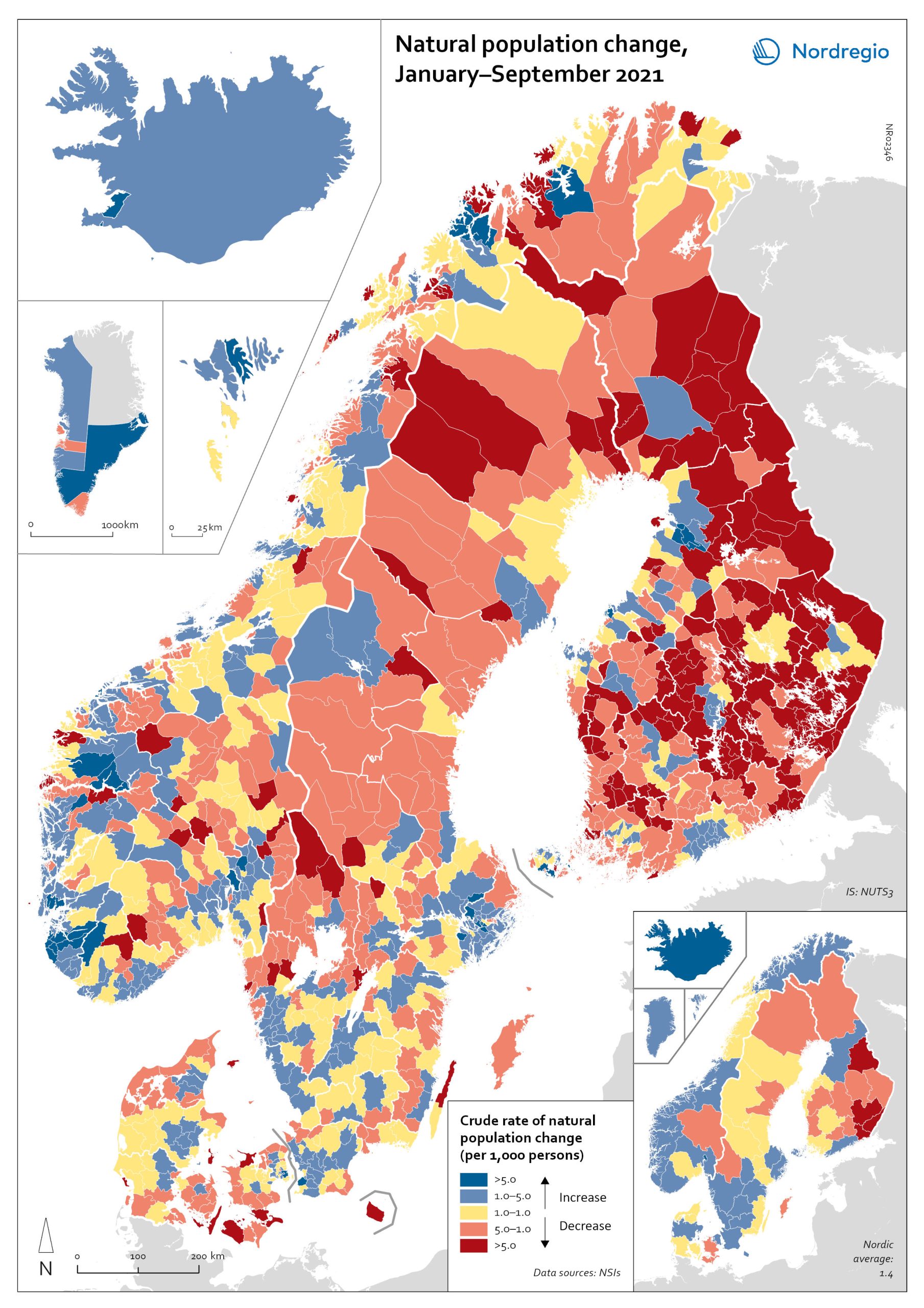
Maps Nordregio
A total of 27.8 million people live in the Nordic Region. Since 2000, the population has grown by 13% or 3.6 million people. Nevertheless, it remains sparsely populated, with huge expanses of unspoiled wilderness - mainly forests, meadows, mountains and water.

Population Of Scandinavia (Nordic Countries) 1750 2020🇩🇰🇸🇪🇳🇴🇫🇮🇮🇸 YouTube
The Nordic countries (also known as the Nordics or Norden; lit. 'the North') [2] are a geographical and cultural region in Northern Europe and the North Atlantic. It includes the sovereign states of Denmark, Finland, Iceland, Norway [b] and Sweden; the autonomous territories of the Faroe Islands and Greenland; and the autonomous region of Åland.
A 1960s Map Showing Population Density in Nordic Countries r/MapPorn
Stockholm is the biggest of the Nordic cities, with a population of 2.2 million, followed by Copenhagen at 1.3 million, Oslo at 1.2 million, and Helsinki at 1.1 million. Reykjavik with its population of 215,000 has enjoyed the most rapid growth - 30% since 1990.